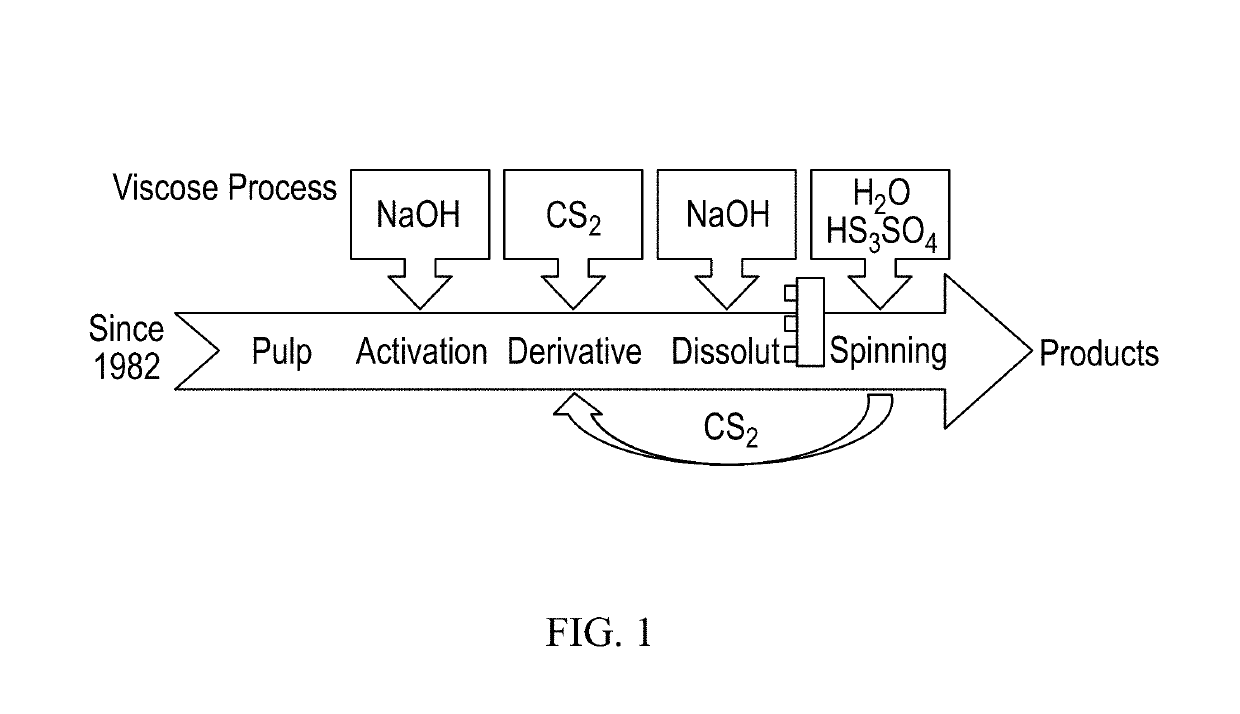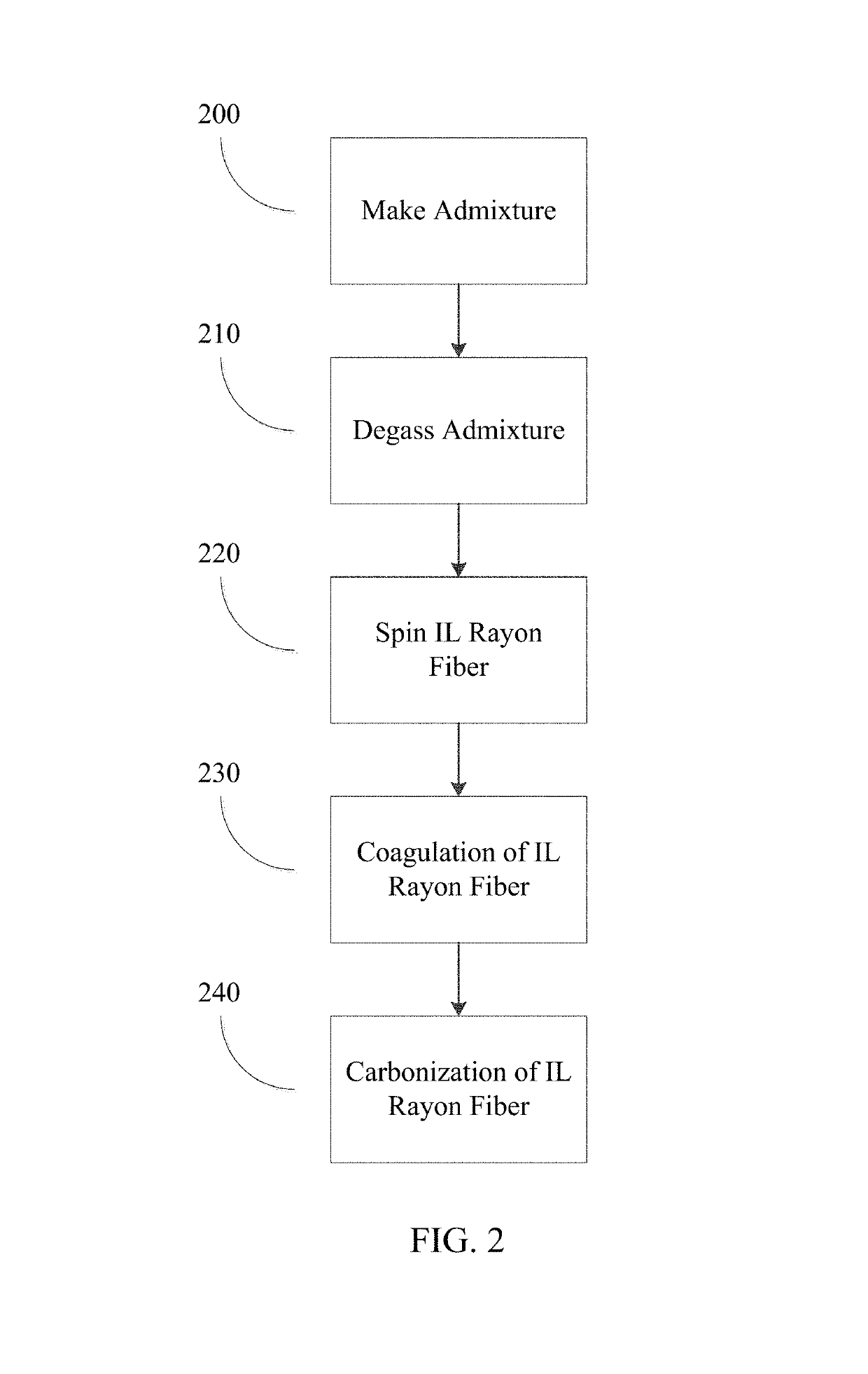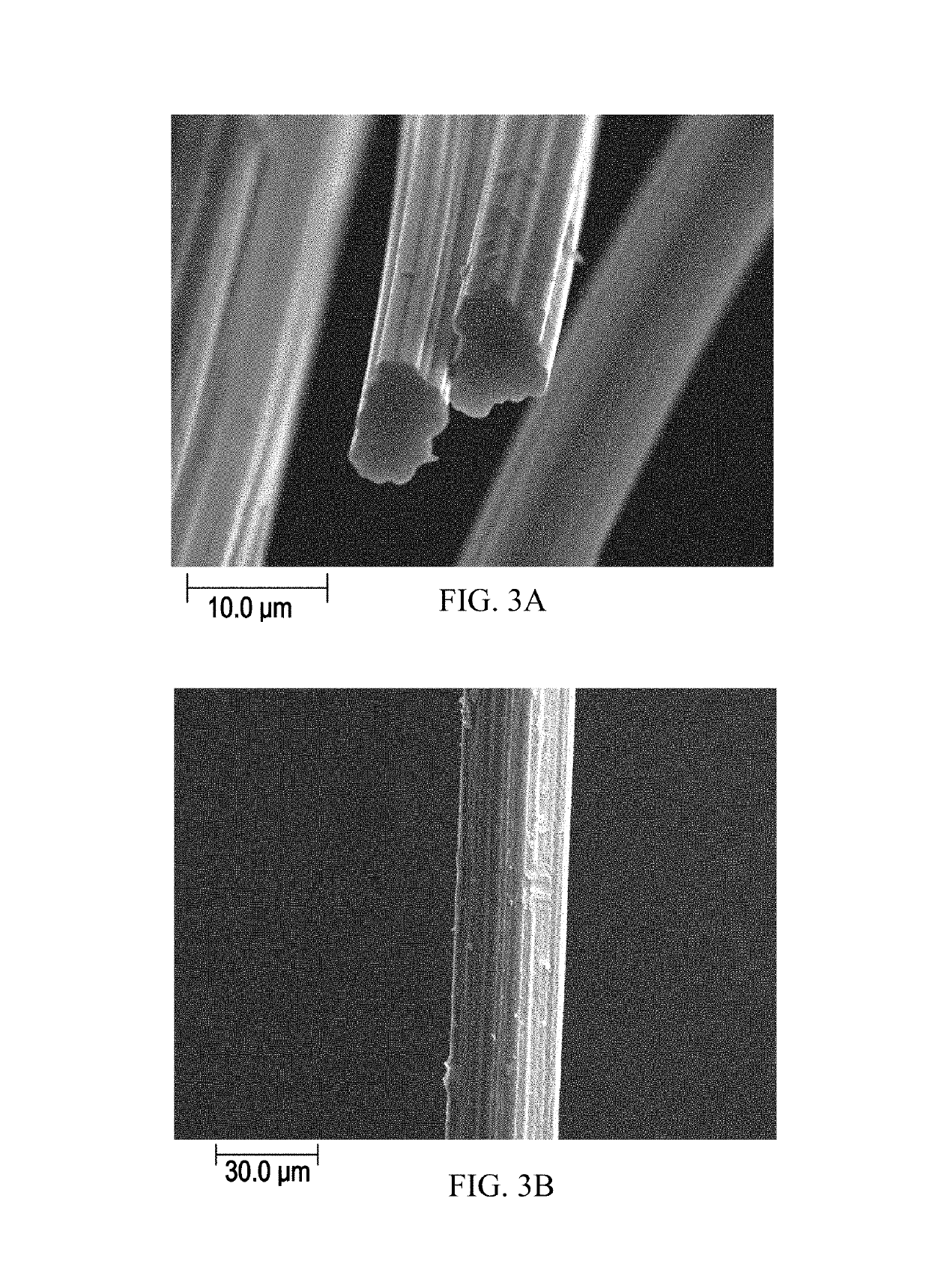Methods for making carbon fibers for high temperature applications
a technology of carbon fiber and high temperature, applied in the direction of fiber treatment, fiber treatment, transportation and packaging, etc., can solve the problems of significant differences in the suitability of the resulting fiber for thermal protection systems, inability to produce toxic waste products, and inability to meet the requirements of high-temperature applications
- Summary
- Abstract
- Description
- Claims
- Application Information
AI Technical Summary
Benefits of technology
Problems solved by technology
Method used
Image
Examples
Embodiment Construction
[0014]The present disclosure relates to methods and systems for the continuous production of cellulosic filament yarns with a compact, homogeneous structural morphology, and the low thermal conductivity carbon fibers produced by these methods. The disclosed methods utilize safe and recyclable ionic liquids (IL) to produce carbon fiber precursors from cellulose. In one embodiment, the fibers are produced by the carbonization of cellulose carbon fiber precursors. The fibers are manufactured from cellulose solutions in ionic fluids as part of a wet spinning process. The processing of the cellulose at near room temperature preserves the necessary degree of polymerization. The precursor fiber filaments have an increased tear resistance with simultaneously sufficient elongation, a round or crenulated cross-section, and homogeneous fiber morphology. The filament yarns exhibit performance characteristics similar to those produced from traditional viscose rayon. The resulting carbon fibers a...
PUM
| Property | Measurement | Unit |
|---|---|---|
| temperature | aaaaa | aaaaa |
| temperature | aaaaa | aaaaa |
| temperature | aaaaa | aaaaa |
Abstract
Description
Claims
Application Information
 Login to View More
Login to View More - R&D
- Intellectual Property
- Life Sciences
- Materials
- Tech Scout
- Unparalleled Data Quality
- Higher Quality Content
- 60% Fewer Hallucinations
Browse by: Latest US Patents, China's latest patents, Technical Efficacy Thesaurus, Application Domain, Technology Topic, Popular Technical Reports.
© 2025 PatSnap. All rights reserved.Legal|Privacy policy|Modern Slavery Act Transparency Statement|Sitemap|About US| Contact US: help@patsnap.com



